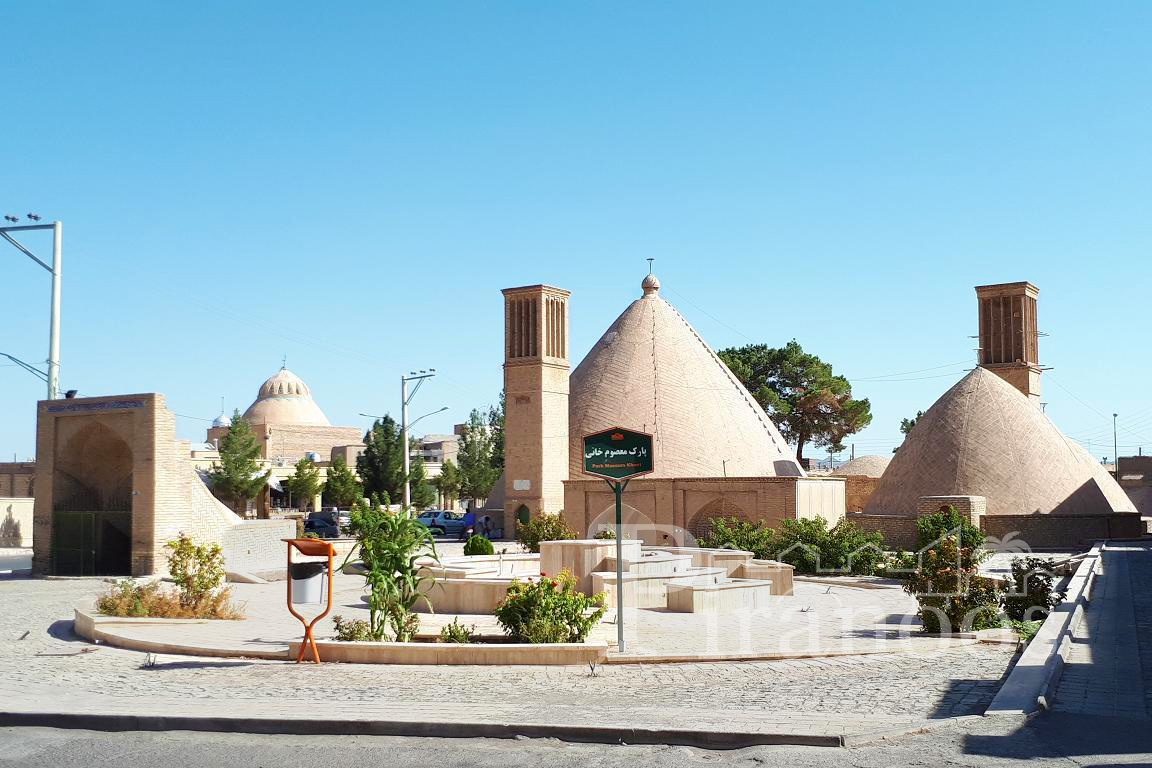The city of Naein is 170 km north of Yazd and 140km east of Isfahan. It is a city of more than 3000 years old in Isfahan province in central Iran. The history of this city goes back to the pre-Islamic era. This city, shining like a gem in the heart of desert, has several valuable monuments: from historical houses, ancient castles and elegant mosques to old Hamams (traditional Iranian bath houses) and Ab Anbars (a traditional reservoir or cistern of drinking water in Iran). Naein’s Ab Anbars are among the most outstanding landmarks of this beautiful city. The city of Naein is located in a dry, desert climate and all of its Qanats (a traditional underground channel to transport water in Iran) do not have potable water due to Salinity. This made the people of this ancient city to build several Ab- Anbars to provide their drinking water. The water needed for these Ab-Anbars was previously supplied by the surface water from rain and snow. It is now provided with the storage of tap water in winter.

Ab -Anbars, easily recognizable by their dome roofs, can be found throughout most of Naein’s neighborhoods. There are more than 130 Ab -Anbars in the city of Naein, about 80% of which are still active especially in the summer and this is why Naein is called the city of Ab Anbars! Most of the Naein’s Ab Anbars, dating back to post- Safavid period, are used to store and supply water during the warm seasons. Twin (Khan), Masoum Khani, Noabad, Mohammad Qasim and Sahara Mohamadieh are among the most famous Ab- Anbars of Naein. So far 12 Ab- Anbars in Naein have been registered by Iran’s Cultural Heritage Organization.

In the desert areas, including the city of Naein, each neighborhood has an An Ab-Anbar. The Ab Anbars are usually very similar in terms of building elements. An Ab-Anbar usually consists of four sections: the underground water reservoir, the platform, the dome, and the wind towers. Therefore, the Ab-Anbars consist of a water source or reservoir, with a dome roof on top of it and two wind towers that keeps the water cool. The most important part of the Ab- Anbars is the water tank or reservoir, which is mostly cylindrical and built under ground. The size and depth of each one is different. All the water tanks which are mostly in a cone-shaped roof are made of raw clay.

The attractiveness of these ancient Ab- Anbars has led many tourists, researchers and visitors from all around the world to visit these masterpieces of architecture in the east of Isfahan province.
The Khan Ab-Anbar or the Twin Ab-Anbar of Naein belongs to the Qajar period. This old monument consists of several parts such as a clay brick dome, valve (Pashir; a water harvesting section in Ab -Anbars) and Bad-gir (the wind towers in Iranian monuments). The Khan Ab -Anbar is adjacent to the Jameh Masque and the Pirnia historic house.
The Masoum Khani Ab Anbar, which is one of the most famous Ab- Anbars of Naein, is located in the Chehel-Dokhtaran neighborhood and right in front of the Khan (Twin) Ab- Anbar. This Ab-Anbar was built in the post Safavid era. Both of these Ab- Anbars are located near the Narin (or Naranj) Castle. The Twin Ab- Anbar is on a low land area adjacent to the castle and the Masoum Khani Ab Anbar is on the main road just in front of the Narin Castle.